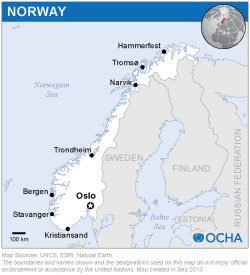GRID-Arendal is a non-profit environmental organisation working at the intersection of science, communication, and policy. Established in 1989 by the Norwegian government with the mandate to support the United Nations Environment Programme. GRID-Arendal has more than 35 years of experience translating scientific knowledge into compelling narratives and actionable insights that address the interconnected crises of climate change, biodiversity loss, and pollution.
GRID-Arendal works closely with the United Nations Environment Programme and a wide network of global partners. Acting as a trusted bridge between science and policy-making, GRID-Arendal fosters innovation, co-creation, and shared learning to catalyse systemic change.
GRID-Arendal integrates capacity building into its projects by working closely with partners to strengthen their ability to understand, communicate, and act on environmental issues. This includes organizing tailored workshops, providing technical support, and co-developing knowledge products such as reports and visual tools. These efforts are designed to empower stakeholders - especially in developing countries - with the skills and resources needed to manage environmental data, influence policy, and foster sustainable development.
Beyond projects, GRID-Arendal promotes long-term capacity building through strategic partnerships and open access to its tools and publications. By fostering South-South and North-South collaboration, and by making its resources freely available, the organization helps build resilient networks and institutions that can continue environmental work independently and sustainably.
GRID-Arendal brings together a multidisciplinary team of scientists, communicators, and policy advisors working at the intersection of environmental sustainability and disaster resilience. Their expertise includes:
Blue carbon ecosystems: mangrove, seagrass, and salt marsh monitoring for climate mitigation and adaptation.
Polar and mountain environments: cryosphere storytelling, risk communication, and glacial hazard awareness.
Environmental communication: infographics, maps, atlases, and story maps that transform scientific data into policy-relevant products.
Nature-based solutions: research and policy guidance on integrating ecosystems into disaster risk management.
Capacity-building: training governments and institutions in applying environmental data for resilience strategies.
In addition, GRID-Arendal’s areas of work include environmental security and environmental crime, disaster risk reduction (DRR) in particular, as well as assessments of the environmental impacts of armed conflicts – in this area we cooperate with the OSCE on Ukraine and with UNEP.
GRID-Arendal’s projects rely on integrating Earth observation, geospatial mapping, and environmental datasets into decision-support products. Technical approaches include:
Thematic mapping and visualisation
Spatial analysis for coastal and cryosphere monitoring
Production of atlases, infographics, and story maps
Knowledge platforms that package environmental datasets into accessible formats for policymakers
For more information on the host institution, visit: https://www.grida.no/ or e-mail us grid [at] grida.no

